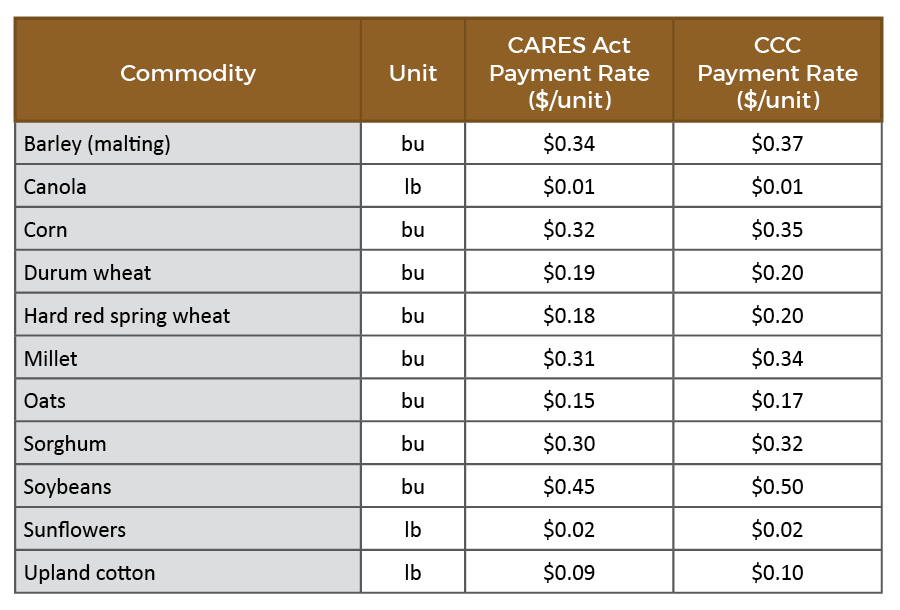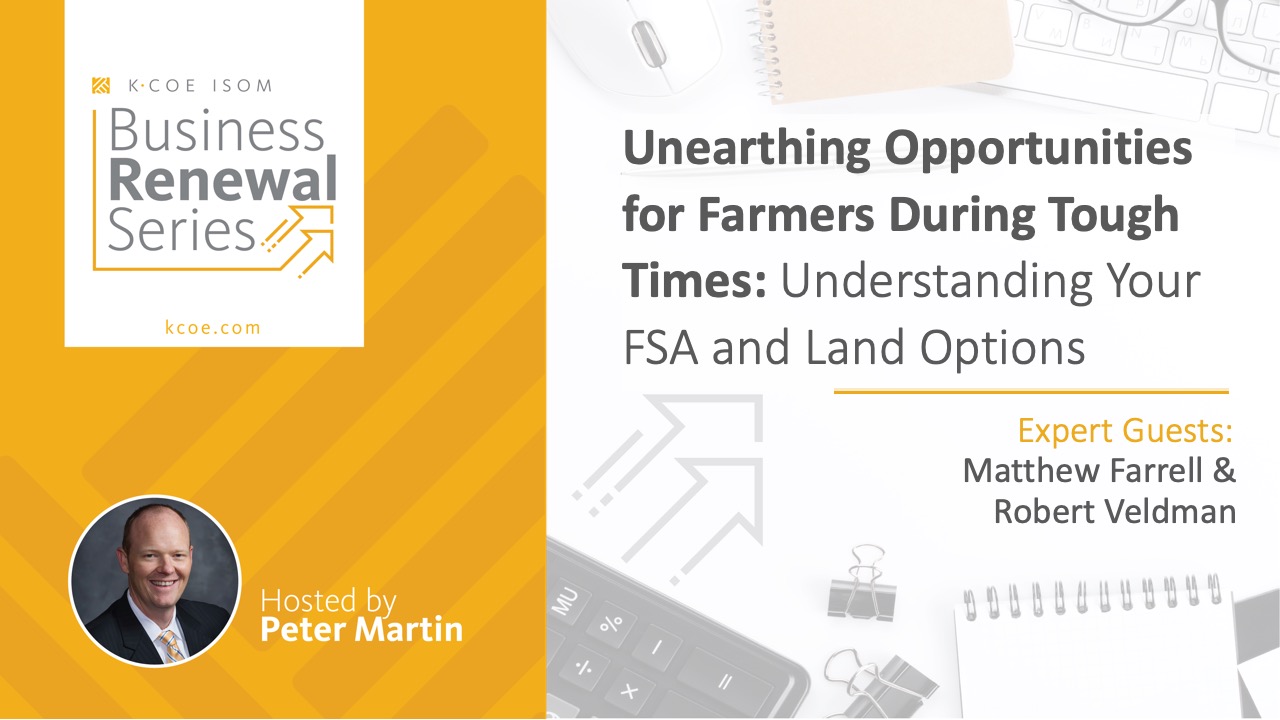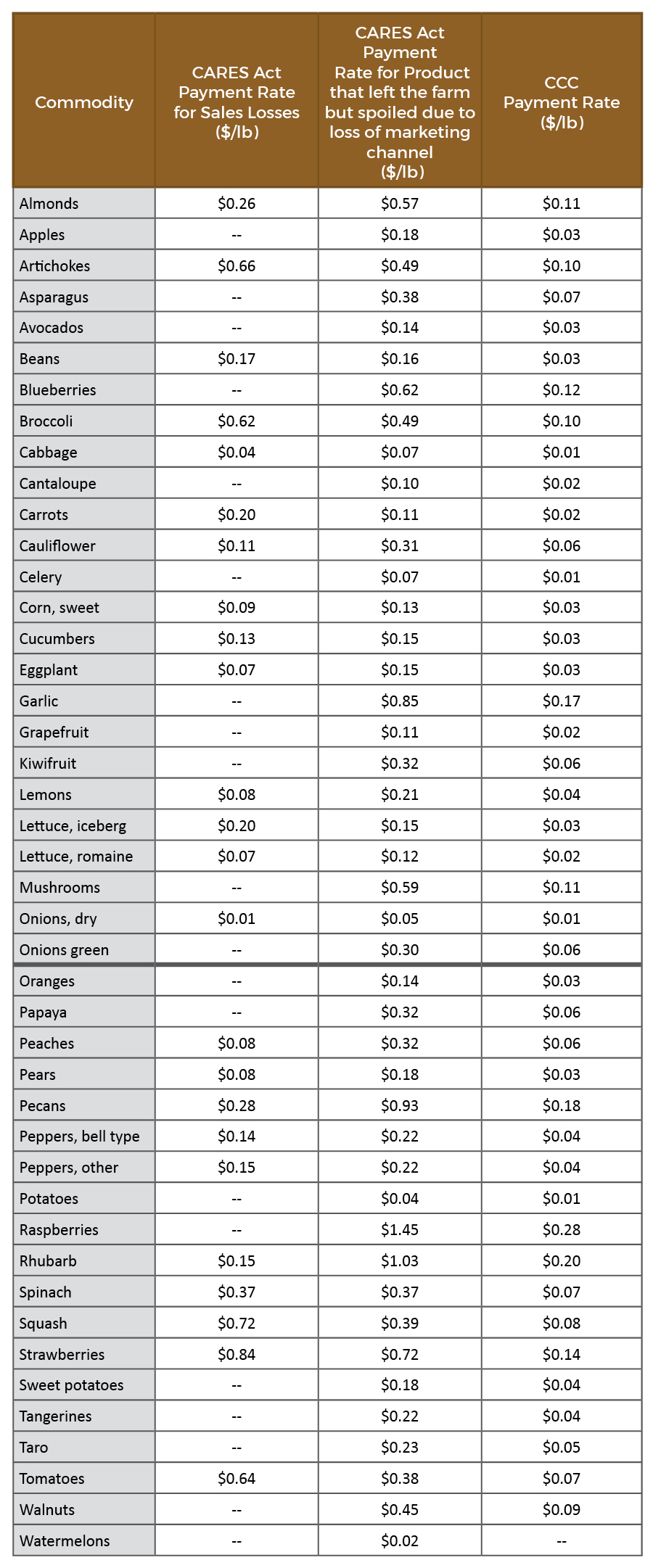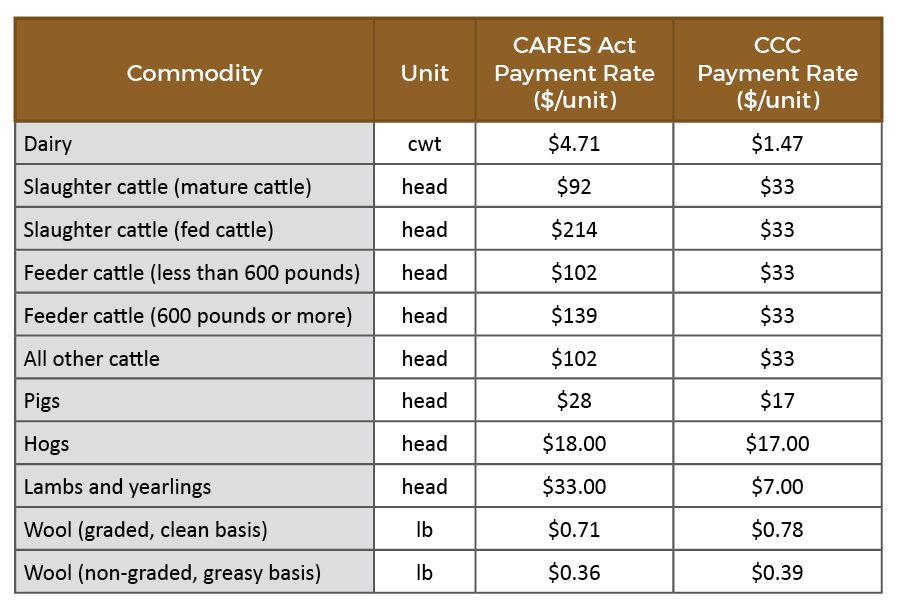Reading Time: 5 minutesUpdate 5/21: CFAP Relief Update & Good News for Exporters: The Form CCC-942 that was released this week to certify 75% of Adjusted Gross Income (AGI) is from farming, indicates an IC-DISC dividend derived from farming or ranching activities is considered farm income. This is a change K·Coe has been pushing for, and should help many growers who export to qualify for the CFAP payments that previously didn’t meet the AGI requirements. We are awaiting further guidance regarding the possibility of retroactive 2018 or 2019 MFP payments.
The USDA has announced the details of direct assistance made available to farmers and ranchers through the Coronavirus Food Assistance Program (CFAP). K·Coe’s Farm Program Services team has combed through the relief program and provided a summary of what you need to know below.
“Producers will need to be mindful that this is 2019 or early 2020 production/inventory, and does not reflect 2020 crop year or sales,” says Matthew Farrell, director of K·Coe Isom’s Farm Program Services. “There are also complexities if your operation has made changes between the 2019 and 2020 year that could cause eligibility issues.” K·Coe is helping farmers and ranchers with questions on CFAP, assisting operations with Farm Service Agency (FSA) sign ups, and providing application help to meet CFAP relief requirements.


Considerations when Applying for Relief
- The application period begins May 26 and ends August 28, 2020.
- Only 80% of eligible payments will be issued when the application is approved. The other 20% will be issued if funding remains. Payments will start being issued within a week of the application period beginning.
- There are two funds that the USDA is using to fund the program, and due to the tracking procedure requirement the calculations are somewhat complex, but they will allow for more available money.
- The two funds are the CARES Act and CCC Charter Act. Depending on the commodity, some eligible inventory or sales will be paid out of the CARES Act fund, and some of eligible inventory or sales will be paid out of the CCC Charter Act.
- To be eligible, a producer must have a share in eligible commodity between January 15 and April 15, or April 16 through May 14 as applicable.
- There are five different commodity calculations for program payments:
- Non-specialty Crops
- Specialty Crops
- Livestock
- Wool
- Dairy
Non-Specialty Crops Calculations
Eligible inventory will be the lesser of unpriced inventory the producer has vested ownership in (as of January 15, 2020, or 50% of 2019 production). Payment will consist of the sum of:- 50% of the eligible inventory, multiplied by the CARES Act Payment Rate
- 50% of the eligible inventory, multiplied by the CCC Payment Rate

Specialty Crops Calculations
Payment will be the sum of:- Sales between January 15 and April 15, multiplied by the “CARES Act Payment Rate for Sales loss”
- Any crop harvested and shipped between January 15 and April 15 that spoiled due to loss of marketing channels, multiplied by the “CARES Act Payment Rate for Product that left the farm but spoiled…”
- Unpriced crops that did not leave the farm and/or a mature crop that remained unharvested between January 15 and April 15, multiplied by “CCC Payment Rate”
Livestock Calculations
Payments for Cattle, Hogs, Pigs, Lambs, and Yearlings will be the sum of:- Those sold between January 15 and April 15, multiplied by CARES Act payment rate
- The highest inventory unpriced between April 16 to May 14, multiplied by the “CCC Payment Rate”
- Note: Beefalo and Bison are not eligible for Cattle Loss payments.
Dairy Calculations
Dairy payments will be the sum of:- First quarter production, multiplied by the CARES Act payment rate
- First quarter production multiplied by 1.014, multiplied by the CCC Payment rate
- Note: animals used for Dairy Production or intended for Dairy Production, are not eligible for Cattle Loss payments.
Wool Calculations
Wool payments will be the sum of:- Unpriced inventory on January 15 (not to exceed 50% of 2019 total production) multiplied by 50 percent, multiplied by the CARES Act payment rate
- Unpriced inventory on January 15 (not to exceed 50% of 2019 total production) multiplied by 50 percent, multiplied by the CCC payment rate
Information Needed from Eligible Producers
Eligible Producers that have not participated in Farm Service Agency (FSA) programs previously will need to submit the following information and forms:- Contact and personal information including citizenship status and Taxpayer Identification Number.
- CCC-901: Identifies members of a farm or ranch that is a legal entity. Member Information will be completed by legal entities and joint operations.
- CCC-941: Reports average adjusted gross income for programs where income restrictions apply.
- CCC-942: If applicable, this certification reports income from farming, ranching, and forestry for those exceeding the adjusted gross income limitation.
- AD-1026: Ensures a conservation plan is in place before lands with highly erodible soils are farmed, identified wetland areas are protected, and conservation compliance provisions are met.
- AD-2047: Provides basic customer contact information.
- SF-3881: Collects banking information to allow USDA to make payments to you via direct deposit.
Additional Considerations for CFAP Participants
Must apply a means test: All program participants are subject to the 2020 Average Adjusted Gross Income (AGI) (for the years 2016, 2017, 2018) means test of $900,000. A participant can still be eligible if Average AGI is above $900,000 if at least 75% of the income comes from farming/ranching sources. Corporations, Limited Liability Companies, and limited Partnerships are eligible for multiple payment limits with CFAP (unlike other FSA-administered programs) if first level members are individuals. The maximum payment limits for these entities is three, and would correspond to the number of members who make a contribution of at least 400 hours of active personal management and/or active personal labor. Participants are subject to Highly Erodible and Wetland designations and determinations. Foreign persons are eligible if they provide a significant amount of active personal labor (400 hours or more).Application Process
Documentation Requirements and Submission Guidelines:- CFAP applications can be submitted in person, or via mail, email, or fax to your local FSA office.
- The application will be the AD-3114. FSA will release a spreadsheet to input inventory and sales numbers that will prepopulate the application. As of publishing date the spreadsheet and application have not been released.
- All additional forms must be submitted no later than 60 days after the application is submitted.
- If requested, producers must provide documentation that substantiated: claimed ownership, sales and inventory, the applicant’s ability and intent to harvest, transport, and market the commodity, and/or the applicant’s risk in the commodity. Examples would be:
- Copies or receipts
- Ledgers of income
- Income statements of deposits slips
- Veterinarian records
- Register tapes
- Invoices for custom harvesting
- Records for production costs
- Contemporaneous measurements
- Truck scale tickets
- Contemporaneous diaries
Other CFAP Notables
Contract growers who do not own the livestock will be considered a producer and eligible for payment if the contract allows the grower to have a rick in the livestock. Unpriced inventory means any production that is not subject to an agreed-upon price in the future through a forward contract, agreement, or similar binding document. Future eligible commodities include but are not limited to:- Privately-owned and farmed freshwater products
- Privately-owned and farmed saltwater products
- Nursery crops











